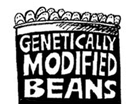Genetically Engineered Food Is Labeled, But Not For Americans
For Immediate Release
October 10, 2002
"GE" label on U.S.-made Heinz product explodes the myth of food label practicality and costs
Food produced for one of the country's largest food companies, H.J. Heinz, is already being labelled if it contains genetically engineered (GE) ingredients. But the labelled product is not sold in the U.S., even though it is produced here. Heinz sells the product in Australia, where GE labelling is required - at about the same price Americans pay. Greenpeace revealed the label today to demonstrate that identifying and labelling GE ingredients for food produced in the US is possible at no increased cost to consumers.
"Everyone in Oregon should get a chance to see this label," said Greenpeace spokesperson Lindsay Keenan. "When a major company like Heinz can label all the GE ingredients, ship the product all the way to Australia, and still make a profit selling it, then you have to wonder why labelling opponents say this is not possible for Oregon."
A concerned member of the public sent Greenpeace the label of a Heinz product sold in Australia, on which four ingredients are listed as "genetically modified". The product, Michelina`s brand Macaroni and Beef, is made in the U.S. for Heinz by Duluth, Minnesota-based Luigino's, Inc. It is labelled "Product of USA".
Heinz told Greenpeace that they only sell the product in Australia and that they have decided to drop this product line because the manufacturer has been unable to guarantee its ingredients are not genetically engineered.
Heinz US policy on GE (or Genetically Modified) ingredients issued in January 2001 states, "Heinz seeks to avoid the use of GMOs in its products.. This policy has led Heinz to remove all GM ingredients from its US baby food varieties.. We also source our own non-GM tomatoes for our Ketchup. GM ingredients may only be considered for use where there are not adequate non-GMO options available.. If it is necessary to utilise GMOs or ingredients derived from GMOs, systems must be in place to track the source and use of these ingredients."
In the U.S., the largest association of food producers, the Grocery Manufacturers Association (GMA), claims that GE labelling is not practical. Yet some of their own members, such as Heinz, are already labelling GE ingredients, at no extra cost to consumers.
"This label makes a liar of anyone who says GE labelling can't be done in the US," said Keenan. "Greenpeace calls upon the GMA to come clean and admit that GE labelling is feasible and is already happening, at no extra cost to consumers. The people of Oregon have the right to know that food companies are already labelling their GE products, without making consumers pay more for safe food."
FDA Letter written to Oregon Gov. Kitzhaber on labeling (Measure 27)
Steve Druker's letter to the Governor exposing the FDA's inaccuracies.

